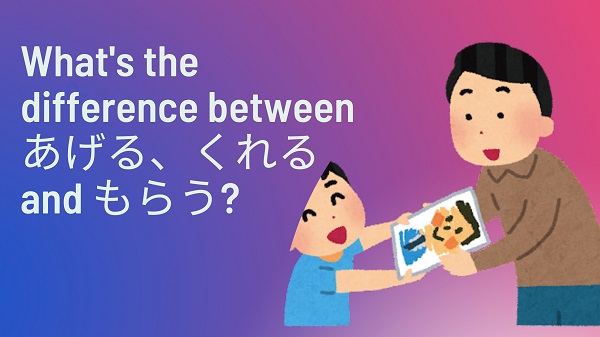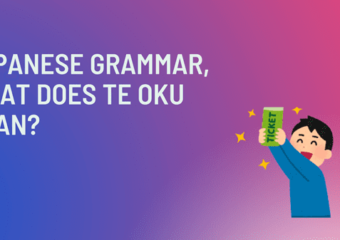I gave a present to my brother.
My brother gave me a present.
Like in these sentences, “give” is give.
It won’t change whoever gives presents or receives the presents.
However, there are two words for “giving”, which are あげる and くれる.
What’s the difference between あげる and くれる?
To understand the difference, we must first understand Japanese culture.
Let’s learn Japanese culture first and then I will teach you Japanese grammar.
Uchi Soto culture

Uchi and Soto is Japanese custom.
Uchi means in-groups(内、うち) and Soto means out-groups(外、そと).
It is the key to understanding Japanese society.
Uchi is the inside group such as yourself, your family or your friends.
Soto is the outside group not belonging to your group.
When Japanese people communicate with people, they distinguish Soto from Uchi.
あげる

Literally, あげる means giving.
When do we use あげる?
Please look at the above picture.
We use あげる when someone gives something from the inside circles to the bigger circles or interacts within the same circle.
Look at this picture.

A boy gave a painting to his father.
Let’s take a look from the boy’s viewpoint.
English: I (the child) gave a painting to my father.
In this case, the child is in the smallest circle, so he said ”ぼくが あげました”.
くれる

くれる also means “giving”.
When do we use ”くれる”?
Please look at the above picture.
We use くれる when someone gives something from the bigger circles to the smaller circles.
Look at this picture again.
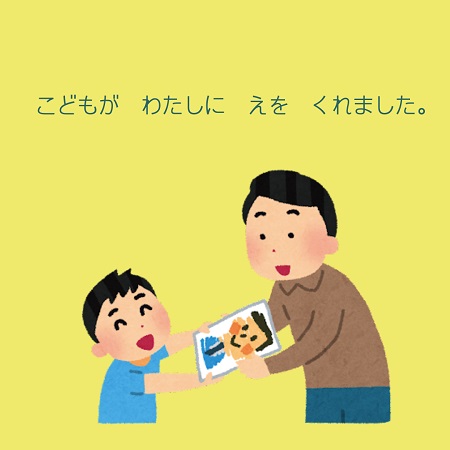
This time, I will take a look from the father’s viewpoint.
English: My son gave a painting to me (the father).
This interaction happened from the bigger circle to the smaller circle, so the father said ”こどもが くれました”.
もらう
もらう literally means “receiving”.
Look at this picture again.
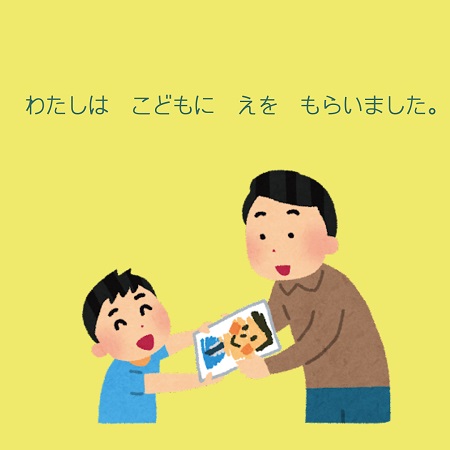
The father received a painting from his child, so ”おとうさんは こどもに えを もらいました“.
Conclusion
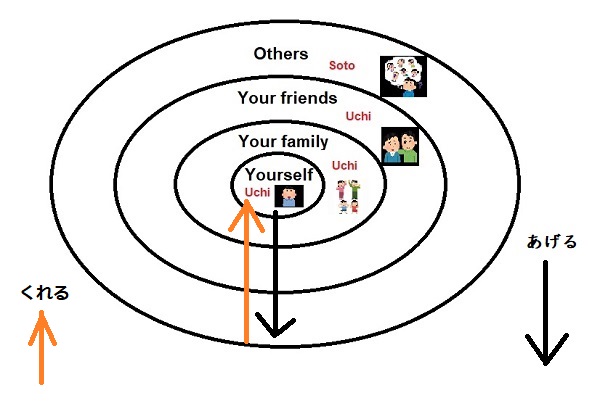
We say あげる when someone gives something from the smaller circles to the bigger circles or interacts within the same circle.
English: I (the child) gave a painting to my father.
We use くれる when someone gives something from the bigger circles to the smaller circles.
English: My son gave a painting to me (the father).
もらう literally means “receiving”.
English: The father received a painting from his child.
If you’d like to learn more Japanese, please feel free to contact me.
I teach Japanese in-person or online.
You can also learn Japanese on my Instagram page.
